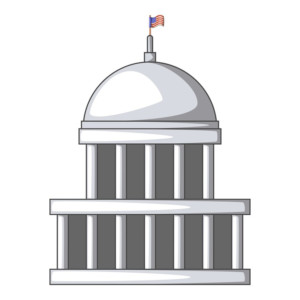Stock Indices:
| Dow Jones | 44,094 |
| S&P 500 | 6,204 |
| Nasdaq | 20,369 |
Bond Sector Yields:
| 2 Yr Treasury | 3.72% |
| 10 Yr Treasury | 4.24% |
| 10 Yr Municipal | 3.21% |
| High Yield | 6.80% |
YTD Market Returns:
| Dow Jones | 3.64% |
| S&P 500 | 5.50% |
| Nasdaq | 5.48% |
| MSCI-EAFE | 17.37% |
| MSCI-Europe | 20.67% |
| MSCI-Pacific | 11.15% |
| MSCI-Emg Mkt | 13.70% |
| US Agg Bond | 4.02% |
| US Corp Bond | 4.17% |
| US Gov’t Bond | 3.95% |
Commodity Prices:
| Gold | 3,319 |
| Silver | 36.32 |
| Oil (WTI) | 64.98 |
Currencies:
| Dollar / Euro | 1.17 |
| Dollar / Pound | 1.37 |
| Yen / Dollar | 144.61 |
| Canadian /Dollar | 0.73 |
How Tax Reform Might Benefit Small Businesses – Fiscal Policy
Should legislation pass that would ensue tax reform and essentially lower existing tax rates, it would be small businesses that would primarily benefit.
The cornerstone of the U.S. economy consists of small businesses with 500 or fewer employees. There are currently 29.6 million small businesses throughout the country representing nearly every single business at 99.9% of all businesses. These small businesses employ 58 million Americans comprising over 47% of the workforce, according to the National Federation of Independent Business.

White house icon. Cartoon illustration of white house vector icon for web
The burden of navigating the complex and nebulous tax laws falls primarily on small business owners. Large corporations have armies of accountants, consultants and tax attorneys that help mitigate the burden and often find ways to reduce tax liabilities with extremely complicated tactics. These same resources are not readily available to small business owners.
The IRS estimates that small business owners spend almost 2,000,000,000 hours per year and $18 billion annually to figure out their taxes.
Sources: National Federation of Independent Business, IRS
More Homes For Sale, Less Homes Sold – Housing Market Update
Dynamics within the housing market are a result of wages, consumer sentiment, in-terest rates, and the economic environment. Over the past year, the number of homes for sale and the number of homes sold has diverged. The U.S. Department of Housing and Urban Development carefully tracks all home listings and sales on a monthly basis. The most recent data available reveals that for the past year, as of July 2017, there was an increase in the number of homes for sale and a decrease in the number of homes sold. At the end of July, there were 276,000 homes for sale while there were 571,000 homes sold. July 2016 saw 627,000 homes sold with only 237,000 homes for sale nationwide.
Causes of the divergence may be attributable to an increase in new homes or a de-crease in buyers. Further details from the data show that some regions of the coun-try experienced either more homes sold or for sale relative to other regions.
Sources: U.S. Census Bureau, U.S. Department of Housing & Urban Development
